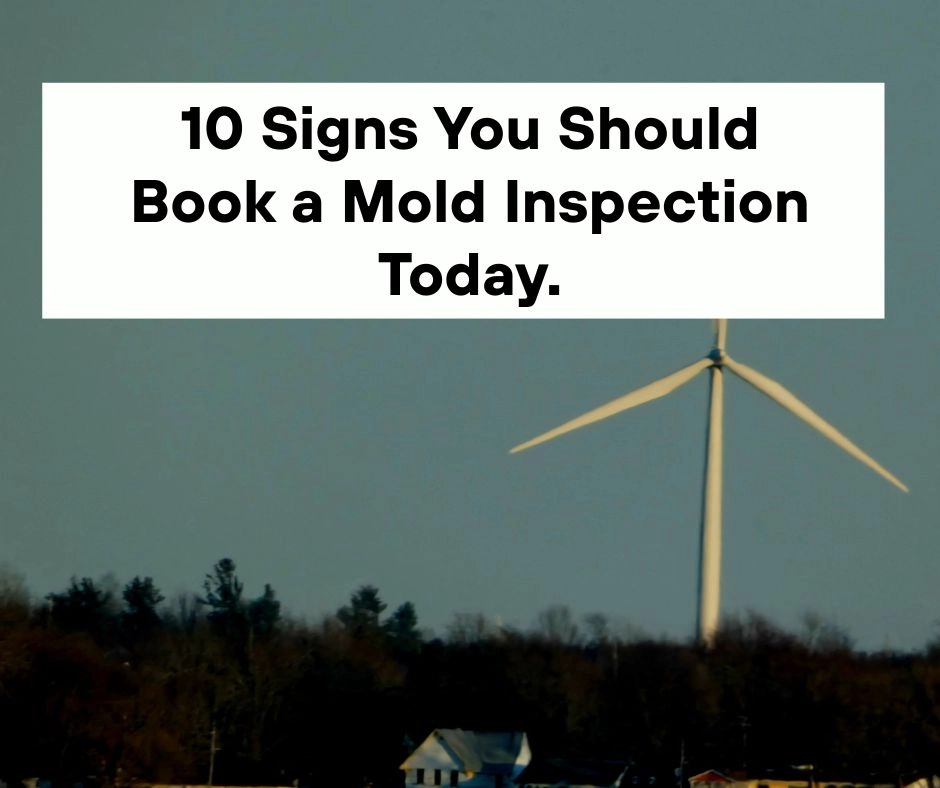
Cookies & Privacy
This website uses cookies or similar technologies to enhance your browsing experience and provide personalised recommendations. By continuing to use our website, you agree... Cookie Policy

Mold. Just the word can send shivers down a homeowner's spine. While often unseen, this unwelcome guest can silently wreak havoc on your home's structure and, more importantly, your family's health. Ignoring the subtle warning signs of mold growth can lead to costly repairs and persistent health issues.
So, how do you know if it's time to call in the professionals for a mold inspection? Here are 10 key signs that should trigger your awareness and prompt you to act today.
Mold spores are microscopic and can easily become airborne, entering your respiratory system. If you or members of your household are experiencing any of these unexplained or persistent health issues, mold could be the culprit:
Persistent Allergic Reactions: Are you constantly sneezing, coughing, experiencing a runny or stuffy nose, or itchy, watery eyes, especially when at home? If these symptoms don't clear up, or are worse indoors, it might be a mold allergy.
Increased Asthma Symptoms: For those with asthma, mold exposure can significantly worsen symptoms, leading to more frequent wheezing, shortness of breath, and chest tightness.
Skin Irritation or Rashes: Unexplained skin rashes, itching, or irritation can sometimes be a reaction to mold exposure.
Chronic Fatigue and Headaches: Mycotoxins, substances produced by some molds, can cause unexplained fatigue, headaches, dizziness, and a general feeling of malaise.
Respiratory Issues in Non-Allergic Individuals: Even if you don't have allergies, mold can irritate your respiratory system, causing persistent coughing, wheezing, or difficulty breathing.
Beyond health symptoms, your home itself might be sending clear signals that mold is present:
Musty, Earthy Odor: This is often the first and most tell-tale sign of hidden mold. If you detect a damp, stale, or "old" smell, similar to decaying wood or wet dirt, even if you can't see anything, mold is likely growing somewhere.
Visible Mold Growth: This might seem obvious, but mold can appear in various colors (black, green, white, orange, pink) and textures (fuzzy, slimy, powdery). Don't just dismiss small spots as dirt; investigate them. Common places to check include bathrooms, basements, laundry rooms, and around windows.
Water Stains or Discoloration on Walls, Ceilings, or Floors: These indicate past or present water intrusion, which is mold's best friend. Even if the area appears dry now, mold could be flourishing behind the surface.
Warped, Bubbling, or Peeling Paint/Wallpaper: Moisture behind surfaces can cause paint to crack, bubble, or peel, and wallpaper to detach. This is a prime hidden spot for mold growth.
Condensation on Pipes or Windows: Excessive condensation indicates high indoor humidity, creating ideal conditions for mold growth, especially in cooler areas.
Some situations demand immediate attention, while others warrant a routine check.
Book an Inspection URGENTLY if:
Recent Water Damage or Flooding: If your home has experienced any kind of water event – a burst pipe, roof leak, appliance leak, or flood – and was not thoroughly dried within 24-48 hours, mold growth is highly probable and needs immediate assessment.
Persistent Musty Odor with No Visible Source: A strong, lingering musty smell strongly indicates hidden mold that requires professional detection and removal.
Worsening or New Health Symptoms: If you or your family members develop new or significantly worsening allergy-like symptoms, respiratory issues, or other unexplained ailments that improve when you're away from home, don't delay.
Visible Mold Covering a Large Area: If you see mold growth larger than approximately 10 square feet (about a 3ft by 3ft patch), or if it's returning after multiple cleaning attempts, it's beyond a DIY fix and needs professional intervention.
Consider a Routine Mold Inspection if:
You Live in a Humid Climate: Homes in consistently humid environments are more prone to mold growth, making annual or bi-annual inspections a wise preventative measure.
You're Buying or Selling a Home: A mold inspection can be a crucial part of a pre-purchase inspection to identify potential issues or provide peace of mind to buyers.
Your Home is Older: Older homes may have hidden moisture issues or less effective ventilation, increasing the risk of mold.
You've Had Past Mold Problems: If mold has been an issue before, regular checks can help ensure it doesn't return.
Don't let mold compromise your home or your health. Taking proactive steps can save you significant time, money, and stress in the long run.
Ready to ensure your home is mould-free?